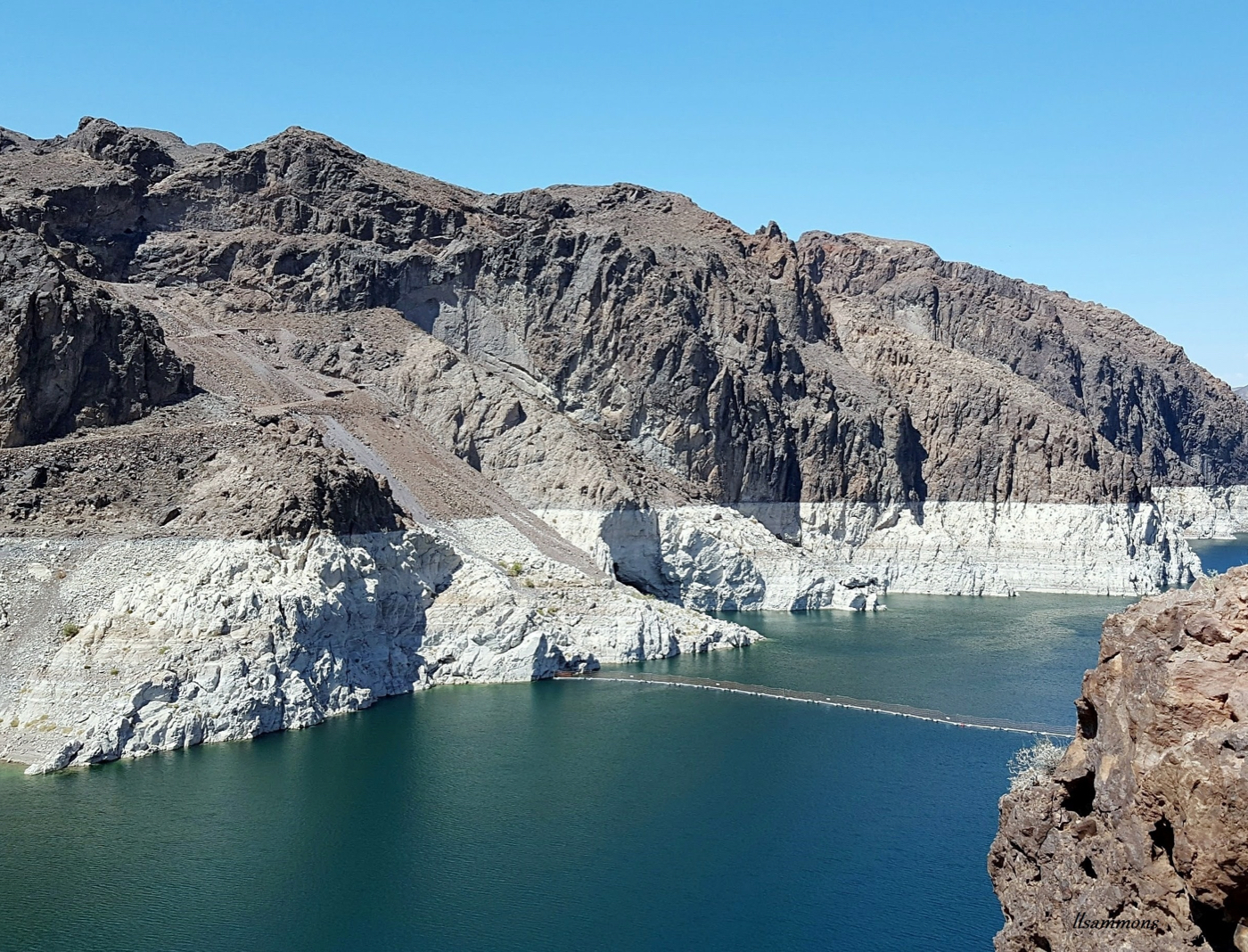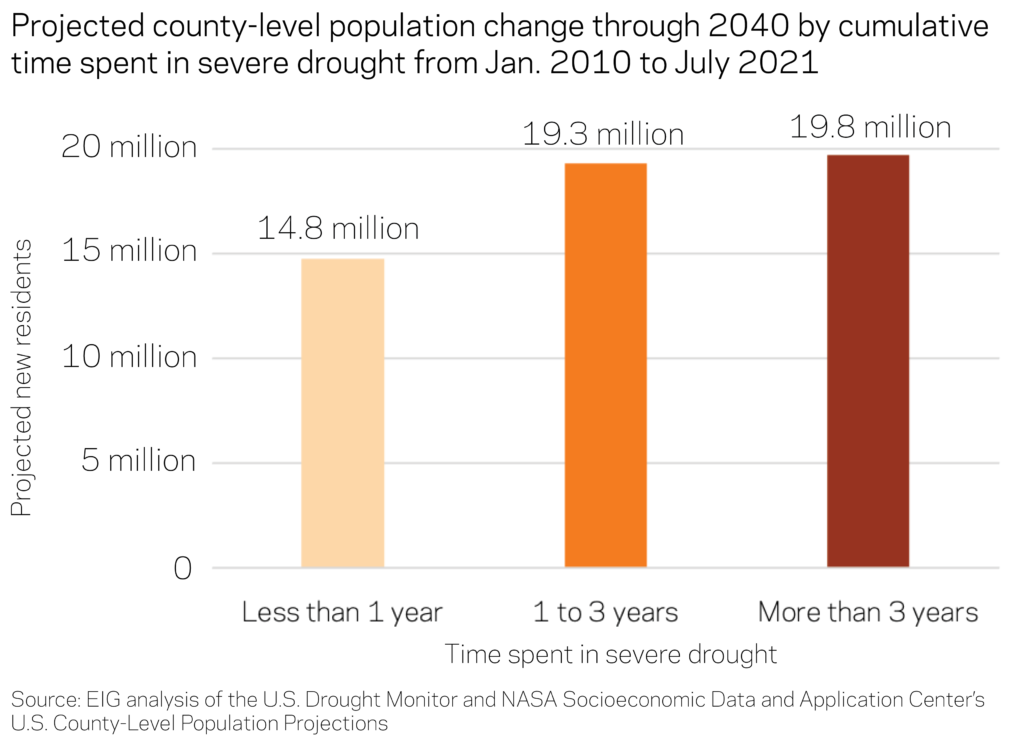By Daniel Newman
The South and Mountain West dominated U.S. population growth over the past decade, yet many of those regions’ fast-growing counties are among the most drought-prone places in the country. Millions of new residents are now living in areas having to confront changing climate norms that potentially imperil their continued economic and demographic success. With reservoirs at record low levels throughout the West and the effects of sustained drought conditions increasingly being felt from agriculture to development, one of the most far-reaching questions in the United States over the coming decades is whether growth trends will ultimately collide with nature’s ability to sustain such a large influx of people.
Population boomed by 10 percent in the country’s driest places over the past decade
Much of the country’s booming Southwest cumulatively spent at least three years experiencing “severe” drought conditions or greater between January 2010 and July 2021. (Many counties also endured “extreme” or “exceptional” drought conditions, which are more intense classifications than “severe.”) This driest group of communities, home to more than 81.4 million people, averaged a total of 245 weeks in severe drought—a situation under which crop or pasture losses become likely and water shortages are common, often requiring the imposition of usage restrictions. Over roughly the same time, these places added nearly 7.4 million people, expanding their population by 10 percent. Meanwhile, the counties largely in the Northeast and Midwest that spent less than a year suffering through severe drought expanded their ranks by only 3.6 percent, or a total of 5.7 million residents.
Nearly 20 million additional residents could be in some of the most water-starved counties by 2040
Some of the country’s most water-starved states like Arizona, Utah, and Texas are poised to continue adding millions of residents in the coming decades, further compounding economic and infrastructure concerns around water availability and heat-related health problems. NASA’s Socioeconomic Data and Applications Center produced several county-level population projections factoring in various future development policies, fossil-fuel usage, emission reductions, and climate adaptation policies. Based on the “middle of the road” scenario involving medium challenges to climate change mitigation and adaptation, the U.S. population is expected to grow by nearly 54 million through 2040. Almost 37 percent of those gains are expected to occur in the 507 counties, mainly in western states and Texas, that have cumulatively experienced at least three years of severe drought conditions since 2010.
Looking even further into the future, climate change is expected to impact many of these fast-growing, drought-prone communities more severely than others by the end of this century. One estimate of future county-level economic damages for the last two decades of the 21st century suggests that these counties will average higher median damages as a percent of county income if carbon emissions continue under “business-as-usual” conditions. By 2080, the most drought-stricken group of counties could be experiencing annual economic losses that average 5.6 percent of income due to climate-related impacts. The slower growing, less drought-affected counties are expected to suffer median losses that average a more modest 3.5 percent under this scenario.
The record-breaking temperatures blanketing the country in the summer of 2021 are a timely reminder of the extreme heat and drought conditions that have become increasingly common over the past decade. As climate change accelerates, it presents an ever larger threat to life and the continued economic development of what are currently the country’s most dynamic regions and some of its strongest economic engines. Evolving climate realities will have national implications that present uncomfortable trade-offs between land uses, require significant lifestyle changes, or reorder migration patterns as nature asserts itself against Americans’ desire to live in increasingly hotter and drier locales.







